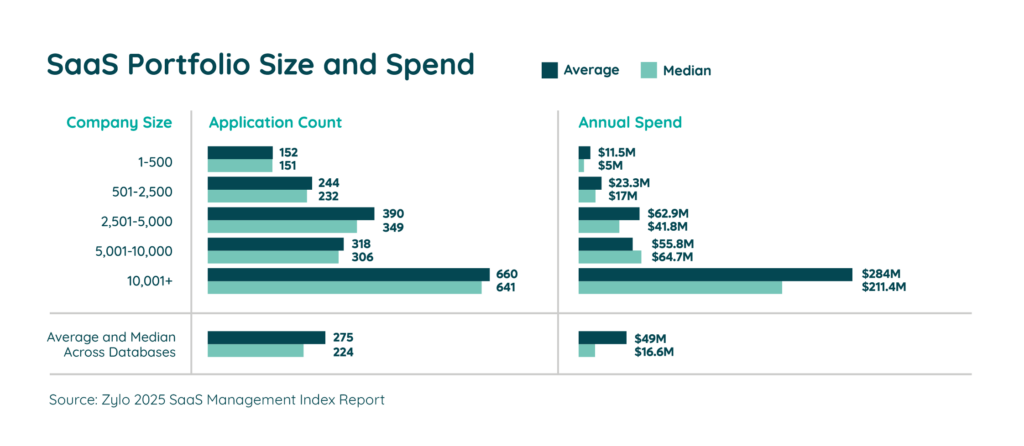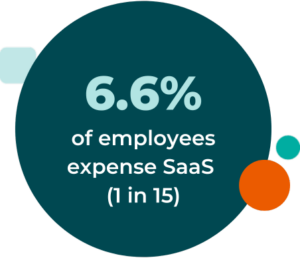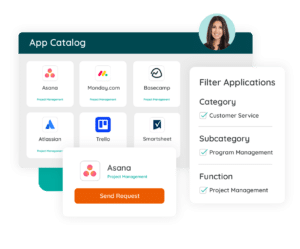Table of Contents
While having a holistic SaaS Management program is ideal, it’s often that other business practices address SaaS in part. From enterprise architecture to spend management and SaaS operations – or what we like to call SaaS Management by a different name.
When it comes to SaaS operations (SaaSOps), organizations focus on optimizing both operational and security tasks to ensure business critical tools run optimally. That task typically includes choosing the right apps relevant to the employee experience, simplifying the onboarding process, ensuring budgets are met, and managing security risks.
However, all of these goals present a unique set of challenges. Each of which must be solved to ensure SaaS is driving value safely. And that’s why today we’re addressing five common SaaS operations challenges and how to solve them effectively.
SaaS Operations Challenge #1: Redundant Tools
SaaS portfolios across industries share the same problem: They’re rife with redundancy. The biggest culprits are online training classes, team collaboration, and project management tools. However, functional overlap can occur anywhere.
 The first step in solving redundancy is identifying it. As we always say, you can’t manage a problem you can’t see. So, visibility is a top priority. And there are a few ways to get there – some better than others.
The first step in solving redundancy is identifying it. As we always say, you can’t manage a problem you can’t see. So, visibility is a top priority. And there are a few ways to get there – some better than others.
For example, manual spreadsheets have long been used to manage, well, almost everything. You could have teams to self-report application usage and record findings in a master sheet. However, spreadsheets require a large amount of manual effort, and the results quickly become outdated. Worse, they’re inexact.
That’s why we will always recommend adopting a SaaS Management Platform like Zylo whose Discovery Engine automatically identifies SaaS applications and spending in real-time.
From there, reducing functional application redundancy is simply a matter of:
- Building a system of record
- Surveying users
- Measuring utilization and costs
- Identifying your ideal number of apps
- And eliminating unnecessary apps
How the Zylo Discovery Engine Powers the Most Comprehensive SaaS Management Platform
Learn MoreSaaS Operations Challenge #2: Reduce SaaS Costs without Disrupting Processes
Even during easygoing economic times, everyone wants to maximize their operating costs. Unfortunately, this can be a challenge when it comes to SaaS. Especially when you also need to ensure operational efficiency.
The average organization spends around $49M a year on SaaS alone. Of this spend, they’re wasting around $21M on unused licenses. Although spend management usually isn’t the domain of SaaSOps, it is an important concern for the entire organization. As such, it’s important to consider how this impacts operations when you’re rightsizing licenses and rationalizing applications.

How this is achieved varies. It could include rationalizing applications and cutting the dead weight from the stack. Alternatively, rightsizing allows organizations to match their paid license seats to their needs. Regardless, it requires insights into how, where, and why SaaS is being used.
SaaS Operations Challenge #3: Limited Visibility
As we said before, you can’t manage what you can’t see. And this is a particular challenge when it comes to SaaS management.
One in six employees expense SaaS, and when they don’t go through the right channels, it’s easy for that to go overlooked. As such, Shadow IT proliferates. Although not all shadow IT is inherently bad, it can pose serious problems. When you don’t know what apps are in your environment, it’s remarkably difficult to optimize and ensure your apps are driving value for the organization.

Thankfully, there are steps an organization can take to eliminate Shadow IT.
As with all SaaS challenges, it starts with building visibility into your entire SaaS portfolio. Here we again see the importance of utilizing effective SaaS discovery. Once all applications are visible, the next steps can begin.
Once you’ve achieved complete visibility, it may be tempting to crack down with an iron fist on your Shadow IT. However, building relationships with your SaaS buyers and facilitating communication is more important in this case. These buyers adopted these applications for a reason. Understanding their needs will help decide whether former shadow IT should remain in the stack.
Finally, define your SaaS governance strategy. This will help prevent shadow IT in the future. It should entail how you control what enters the tech stack, define levels of IT management, and distribute SaaS management where possible.
SaaS Operations Challenge #4: Inefficient Onboarding
SaaS is about empowering employees with the tools they need to do their jobs. However, if they’re not aware of the software in your stack, it can’t do that. That’s why it’s important that from day one, you make clear what’s available to new employees during onboarding.
 Otherwise, you risk a poor employee experience during the most critical phase of an employee’s time with your organization.
Otherwise, you risk a poor employee experience during the most critical phase of an employee’s time with your organization.
As such, it’s important to develop a SaaS onboarding checklist.
- Inform new hires of available SaaS
- Explain how each tool applies to their specific role
- Provide documentation and support
- Develop hands-on experience
- Check-in and provide support
Additionally, establishing an application catalog provides new and old employees alike with a one-stop shop for SaaS. This catalog will inform them how to request access to company standard software as well as how to make new purchases.
SaaS Operations Challenge #5: Offboarding & Security Risks
Equally important to onboarding is offboarding. However, it’s frequently overlooked despite the numerous risks.
Improper offboarding opens an organization to compliance violations. For example, former employees that can still access sensitive data can put an organization at risk of violating requirements such as the Health Insurance Portability and Accountability Act (HIPAA) or the General Data Protection Regulation (GDPR). Both of which risk costing an organization potential millions. In fact, Anthem Inc. faced $16 million in penalties and $115 million from a class-action lawsuit.
That’s not even to mention the potential loss of data, wasted spend, or confidentiality breaches. That’s why, when an employee leaves, it’s essential that all of their access to company devices and software is revoked to prevent any of this from happening.
Just like onboarding, adopting an offboarding checklist can help.
- Define separate procedures for voluntary and involuntary terminations
- Deprovision apps and services
- Update shared passwords and logins
- Redeploy licenses to other teammates
- Reassess offboarding
How a SaaS Management Platform Can Help
Of all these SaaS operations challenges, their solutions have one thing in common: a SaaS management platform can help.
- Central Source of Truth – A SaaS management platform like Zylo provides a central source of truth with complete visibility into all of your SaaS, even shadow IT.
- Categorization – What’s more, it enables you to categorize applications to understand redundancy. This makes rationalization easy and straightforward with no need for tedious spreadsheet management.
- Automated Insights – Automated insights allow you to quickly take action on optimization opportunities no matter where they hide. Again, this helps speed up the SaaS management process without guesswork.
- Enable Onboarding, Intake, and Offboarding – With quick access to your quick SaaS stack, it is easy to track your SaaS and communicate with employees.
- Identify Potential Security Gaps – Maintaining compliance is high priority for most organizations. A SaaS management platform can help identify security gaps to prevent data breaches.
Request a demo of Zylo today to see how you can solve SaaS operations challenges today.

